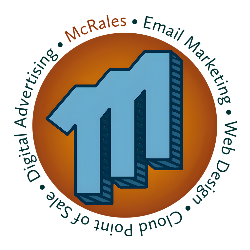Your Website and ADA Compliance
Tips for Improving the Experience for Users with Physical Disabilities
Is Your Website ADA Compliant?
You want your website to attract as many potential customers as possible. But you could be missing out on a significant portion of your audience—and not even realize it. According to the CDC, about 26% of adults in the United States
have some type of disability. That’s 61 million people. And if your site isn’t accessible to them, then you could be leaving a lot of money on the table. The good news is that making your website compliant with the Americans with Disabilities Act (ADA) can seem complex, but it isn’t that difficult—particularly when you automate it. Below, we’ll tell you about a service that can automatically up your site’s accessibility factor.
But first, let’s take a look at what makes a website accessible.
What It Means to be ADA Compliant
Established in 1990—well before the internet was as widely used as it is today—the ADA’s goal is to prevent discrimination against individuals with disabilities. In more recent years, the courts have determined that if the ADA applies to your brick-and-mortar business, then it also applies to your website. The internet is a necessity for many of us as we work and function in society. People with disabilities must not be left out of the online experience.
Because there is a lack of direction for websites in the ADA content, the Department of Justice frequently cites the Web Content Accessibility Guidelines (WCAG) as a reference. These guidelines apply specifically to adjusting websites so people with disabilities are better able to interact with your site. Following WCAG is one way to align your website with ADA guidelines.
Here are just a few key recommendations made by the WCAG 2.0 (at the time of this writing).
- Make your site screen-reader friendly. People who are visually impaired or blind use assistive technologies, including screen readers, to use computers. This offers them an interface through which they can “read” text.
- Be sure to add alternative text, which describes the content of images, graphics, and charts on your site so the screen reader can convey the necessary information.
- Create audio descriptions of video content. The sound in a video might not be sufficient for the visually impaired to glean the necessary information, so an audio description is essential.
- Consider visitors who are color blind. There are different types of color blindness, and making accommodations for all of them is great for boosting your site’s accessibility.
- Be considerate of those who are hearing impaired. If your site is audio heavy, take steps to include transcripts. Check out the National Center on Disability and Access to Education (NCDAE) for their guide on how to caption YouTube videos.
- Keep the layout straightforward to improve understanding. There are ways you can be creative yet still be inclusive, such as offering the option to view the page in a simplified format.
- Make it easy to enter information. Label places where users are to input text and make sure your instructions on what to do are clear.
Automate the Process
It can seem overwhelming to make the changes needed to ensure your business website is ADA compliant. But with artificial intelligence (AI), you can automate the process—cutting down on workload and putting those manhours to better use.
Enter accessiBe, a company whose vision is to make the entire internet accessible to everyone, regardless of physical disability, by 2025. accessiBe is an AI-powered solution that makes websites accessible to people with disabilities and compliant with accessibility legislation. It uses contextual understanding and image recognition to scan and analyze the functionality of every element on a website and adjusts it for screen reader accessibility.
Using accessiBe means your business can:
- Open your site for users with physical disabilities
- Stay protected against lawsuits by staying in ADA compliance
- Expand market reach and attract more potential customers
AI technology also makes it easier to maintain ADA compliance. Every time a site undergoes an update, it could compromise accessibility efforts, and any site is just a couple of updates away from noncompliance. accessiBe’s AI re-scans every page of your site once every 24 hours, ensuring new updates are being remediated for compliance—on the spot.
Find Out More About Web Accessibility
Making sure your website is ADA compliant is a worthwhile effort from a business standpoint: It may potentially increase your reach, your customer base, and your conversions. But you are also helping to make the internet readily available to people with disabilities. And this matters.








